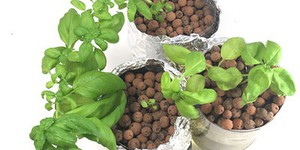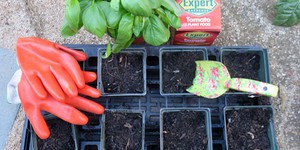Others Like “What is the Rate of Leaf Growth Along the Stem?” (top 20 results)
|
Plant stems grow through a process of elongation due to cell divisions within the stem. Does the entire length of the stem elongate evenly? Or do certain regions along the plant stem grow more or less than others? Regions that are involved in active growth are called vegetative. You can conduct an experiment to show which regions of a bean seedling are involved in vegetative growth. Use a marker to mark one inch sections along the main stem of a young bean seedling. Number the regions 1-6…
Read more
Chlorophyll is a natural pigment found in green plants. It is the primary pigment that absorbs light energy from the sun for photosynthesis. This energy is then used by the plant to synthesize glucose from carbon dioxide and water. Chlorophyll in the leaves of plants can be extracted and separated using chromatography. A good source of chlorophyll for an extraction is a dark green leafy vegetable like spinach. Rub a fresh spinach leaf on the bottom of a strip of filter paper. You can get a…
Read more
Do you like to climb trees? The branches of trees are what make them so fun to climb. Each branch starts out as a tiny shoot that grows out from a stem. How is the growth of shoots along a stem regulated?
Read more
Soil may look like a bunch of dirt, but good quality soil is actually a complex mixture of dirt, nutrients, microorganisms, insects and worms. What type of benefit do these microorganisms offer a growing plant? You can test this by baking soil in the oven to sterilize and kill the microorganisms. Do plants grown in sterile soil do better than plants in unsterilized soil? What about adding worms to one plant, but not to the other. Will the plant with worms grow better? Some insects are bad…
Read more
Germination is the process by which a seed emerges from the seed coat. Many different variables can effect the process of germination. Try to sprout seeds from different species of plant to see if different species vary in germination time. Are weeds faster germinators than vegetables? Try measuring seeds and then germinating them to see if big seeds sprout at a different rate than small seeds. Try sprouting seeds in different environments to test the effect of different environmental…
Read more
Trees grow more during the early spring than they do the rest of the year. Because of this period of dormancy, or lack of growth, each year of growth is marked by a line called a tree ring. You can count the number of rings in the cross section of a tree trunk to show how old the tree is. You can also count the number of rings in a stem to see the age of a stem or branch. One way to measure the rate of growth of a tree is to count the number of rings per inch. Trees with high numbers of…
Read more
Reclaimed (treated) wastewater can be used for many purposes, including landscape watering and freeing up valuable fresh water for other purposes (like drinking water). It's a great way to conserve water, but is it really safe? This science fair project is designed to find out.
Read more
What do plants need to grow? Most of us would answer that they need light, air, water, and soil. But by using a process called hydroponics, you can grow plants without soil! How does it work? Try this project and see for yourself!
Read more
Plants need nitrogen to grow healthy stems and leaves. Although nitrogen is the most abundant element in the air we breathe, that form of nitrogen cannot be used by plants. Nitrogen contained in fertilizer, on the other hand, is readily taken up by plants. In this experiment, you will compare plants grown without nitrogen fertilizer to plants grown with nitrogen fertilizer.
Read more
As we humans zip from place to place, we often forget to stop and smell the roses. Compared to our fast-paced lifestyle, plants seem rooted to the spot. Don't be deceived by appearances however, plants are on the move! This experiment will investigate the stimulus/response relationship in plants and prove that plants can move up and down in response to gravity.
Read more
|
Explore Our Science Videos
Racing Drones: Does Practice Make you Faster?
Squishy Circuits Introduction
Flower Dissection – STEM Activity







